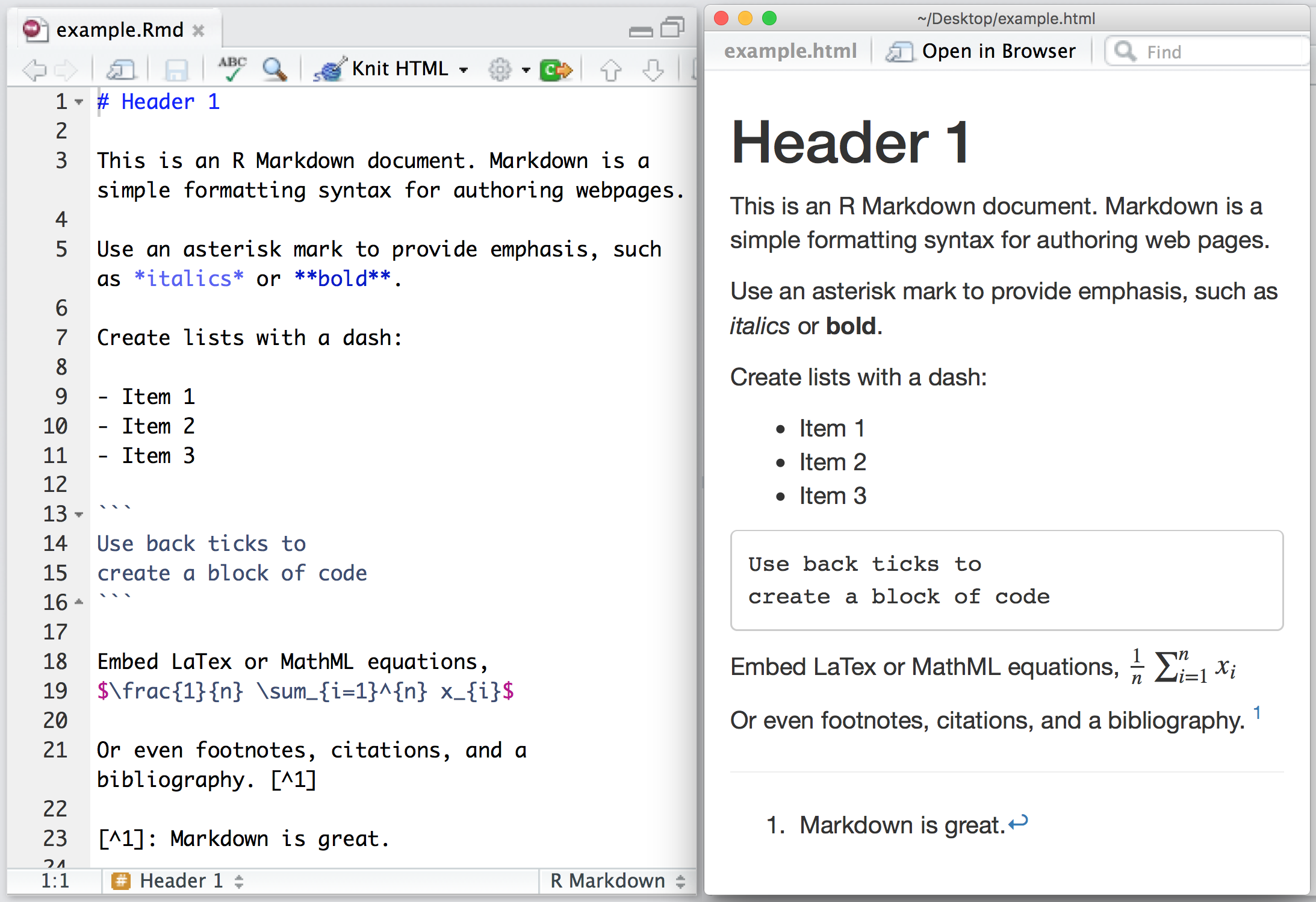
One other note on Jekyll is that it uses the liquid template language. The extra line breaks normally are invisible, but I found they showed up when I pushed content to R-Bloggers which caused paragraphs to be broken up. Note that the pandoc_args setting is to prevent the knit process from inserting extra line breaks into the Markdown file that don’t exist in our R Markdown file. layout : post title : "Deploying R Markdown Online" date : author : Jesse Cambon tags : output : md_document : pandoc_args : variant : gfm preserve_yaml : TRUE. This will source the script to apply all the necessary knit settings when an R Markdown file is knit.
#RMARKDOWN WEBSITES CODE#
To utilize the above script in an R Markdown file, we simply insert the code below as a chunk into the R Markdown file.


The fig.path, which is where our figures will be stored, is set to a folder named after the R Markdown file being run that resides in the ‘/rmd_images’ root directory.The base directory path could change based on which computer we use and where we put our GitHub repository files so the here package allows us to automatically find this path. The here package establishes our ‘base’ directory (the root folder of our GitHub repository).The filename of our R Markdown file is extracted using knitr::current_input() and stored in the variable rmd_filename ( str_remove is used to remove the.Here is what is going on in the above script: # get name of file during knitting and strip file extension rmd_filename <- stringr :: str_remove ( knitr :: current_input (), "\\.Rmd" ) # Figure path on disk = base.dir + fig.path # Figure URL online = base.url + fig.path knitr :: opts_knit $ set ( base.dir = stringr :: str_c ( here :: here (), "/" ), base.url = "/" ) # project root folder knitr :: opts_chunk $ set ( fig.path = stringr :: str_c ( file.path ( "rmd_images", rmd_filename ), "/" )) It lives in the root directory of my Github repository and the contents of this file will be run (via source) when each R Markdown file is knit. The contents of this central R script which I have named rmd_config.R is below. Modifications are made to the knit process so that figure image files are saved in a well organized folder structure and the HTML files display figures properly. This allows you to edit knit settings in one central location and use these settings whenever you knit an R Markdown file. This solution uses a single R script file (.R) which contains knit settings adjustments and is referenced by all R Markdown (.Rmd) files. You can see this folder structure in action here (posts are in the _posts folder and figures are in the rmd_images folder). I find it more convenient to organize figure files in a separate root directory from my R Markdown files and store the images only one folder level deep (ie. This blog post describes the problem in more detail.Īlso, by default R Markdown stores files for figures two folder levels deep using the R Markdown file location as its root (ie. The issue was that Jekyll creates the HTML file for a blog post in a different location than the R Markdown (.Rmd) and Markdown (.md) files and this breaks figure file paths.

When I first used R Markdown to create a post for this blog, none of my figures showed up in the post.

Jekyll Build: Markdown (.md) -> HTML (.html) Knit: R Markdown (.Rmd) -> Markdown (.md)Ģ. The second step is to use the jekyll build command to create HTML content which is what will be displayed online.ġ. The first is to knit the R Markdown (.Rmd) file which creates the Markdown (.md) file. However, this solution should be adaptable to all blogs or websites that use Markdown.įor Jekyll there are two steps to building web content (HTML) from an R Markdown file. Some modifications may be required if you are using another blog or website platform. Note that in this post I will be talking about implementing a solution for a Jekyll blog that is hosted via GitHub pages. You can also find the R Markdown file that generated this blog post here. I use this solution for this blog and a GitHub repository of data science resources. This blog post demonstrates a simple solution to this problem that will also give you central control over R Markdown knit settings across your site.
#RMARKDOWN WEBSITES SOFTWARE#
However, depending on which blog software you use, you may run into some problems related to the file paths for figure images (such as ggplot charts) which will require tweaks in your R Markdown workflow. R Markdown is a great tool for creating a variety of documents with R code and it’s a natural choice for producing blog posts such as this one.


 0 kommentar(er)
0 kommentar(er)
